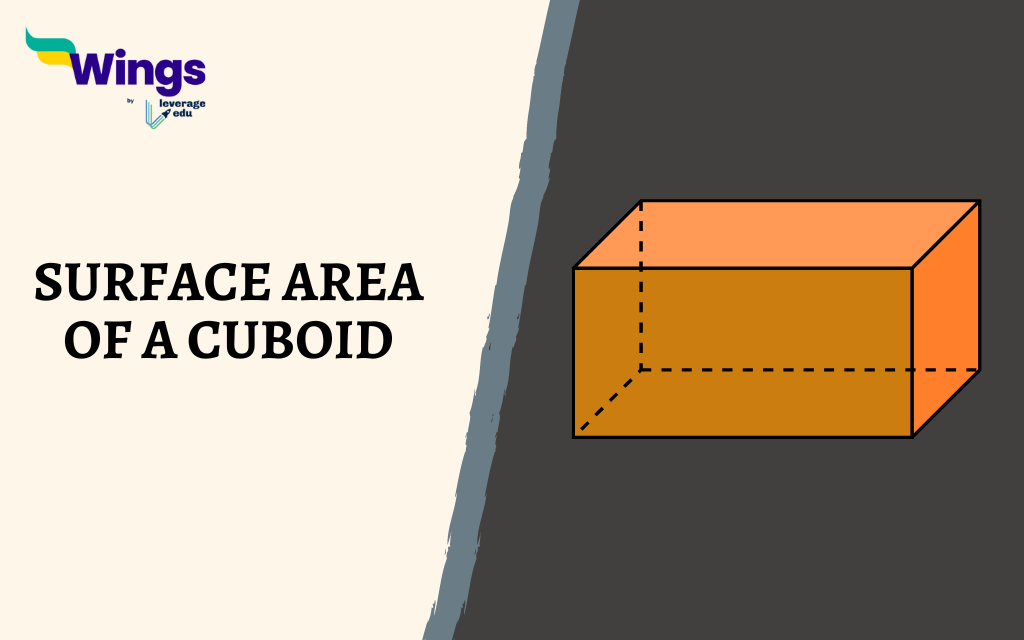Cuboids are three-dimensional figures that are bounded by six rectangular planes, each of which has a different magnitude of length, width, and height. A cuboid can be defined as a figure that has these characteristics. If we take a look around us, we will notice that the cuboid shape is quite prevalent in our day-to-day lives. For example, a box, brick, or anything else that is in the shape of a rectangle can be considered to be a cuboid.
A cuboid, which is a three-dimensional object, can be composed of two-dimensional rectangles of varying dimensions when viewed from any of the ends. It is considered to have eight vertices and twelve edges, and the opposite faces of a cuboid are always equal. This also indicates that the opposite surfaces of the cuboid are in the same dimension.
The total surface area (TSA), the lateral or curved surface area (CSA), and the volume are the measurements that are needed to determine the cuboid. While the volume of the cube is measured in cubic units, the surface areas are measured in square units. The volume of the cube is measured in cubic units.
Derivation of the Surface Area Of a Cuboid
Cuboids have two distinct surface areas, which are referred to as the lateral and total areas, respectively.
On the one hand, the area that each of a cuboid’s six rectangular faces occupies is the cuboid’s total surface area. The area that a cuboid’s lateral faces occupy is known as its lateral surface area.
Total Surface Area Of a Cuboid
The sum of the areas of a cuboid’s six rectangular faces determines its total surface area (TSA), which is equal to:
Total Surface Area of a Cuboid (TSA) = 2 (lw + wh + lh) square units
The above formula gives the total surface area of a cuboid with all six faces.
Lateral Surface Area Of a Cuboid
A cuboid’s lateral surface area is the area that its lateral faces occupy. Hence, the lateral surface area of the cuboid is equal to the total surface area of the cuboid. The area of the top and bottom faces of the cuboid
Hence,
Lateral Surface Area of a Cuboid (LSA) = 2 (lh + wh) = 2 (l + w) square units.
Derivation of a Cuboid’s Total Surface Area
Let us delve deeper into a better understanding of how the Total Surface Area of a cuboid is derived from. Since we are aware that a cuboid has six rectangular faces, the total area of a cuboid can be calculated as follows when applying the following formula:
- Let us first assume that l, w, and h are the length, width, and height of a cuboid.
- With this assumption, we can understand that the front area of a cuboid is l multiplied by h
- The cuboid’s back area will be l multiplied by h.
- The top face area of a cuboid will be l multiplied by w.
- The cuboid’s bottom-face area will be l multiplied by w.
- The left-face area of the cuboid will be h multiplied by w
- The right-face area of the cuboid will be h multiplied by w
This helps us understand that the total surface area is the sum of all the faces of a cuboid, which means that the TSA of a cuboid is:
Total Surface Area of Cuboid 2(lh+lw+hw)
FAQs
Understanding the surface area of a cuboid is essential in various fields like architecture, engineering, and manufacturing. It helps in calculating material requirements, designing packaging, and determining structural strength.
Yes, it’s possible. TSA and LSA measure the surface areas of the cuboid, whereas volume measures the space enclosed within the cuboid. In certain cases, especially with elongated cuboids, the surface area can be greater than the volume.
The TSA is derived by considering the individual areas of each face of the cuboid. The front and back faces contribute areas of lh, the top and bottom faces contribute areas of lw, and the left and right faces contribute areas of hw. Summing these areas yields the formula for TSA: 2(lh + lw + hw).
A cuboid has eight vertices, twelve edges, and six rectangular faces. The opposite faces of a cuboid are always equal in size, and the total surface area (TSA), lateral surface area (LSA), and volume are crucial measurements.
Hope you liked reading this blog. You can also indulge in reading our blog on the curved surface area of a cylinder and learn more about surface areas!
 One app for all your study abroad needs
One app for all your study abroad needs














